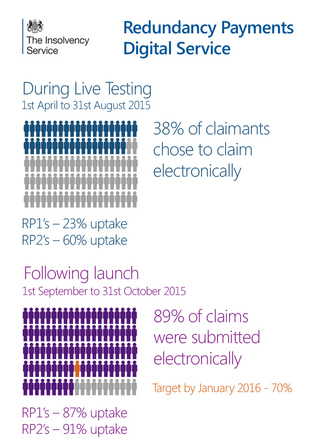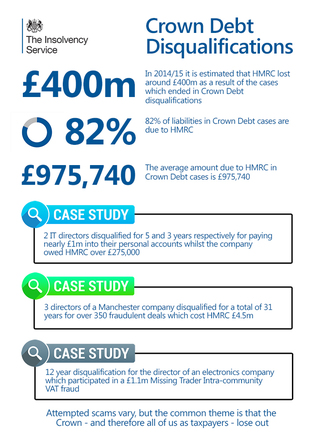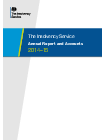 Broadly speaking, the changes fall into three areas:
(1) Insolvency process
- Streamlining insolvency processes to reduce costs, e.g. abolishing little-used procedures like Deeds of Arrangement or Fast Track Individual Voluntary Arrangements
(2) Director disqualifications
- Strengthening the Directors Disqualification regime and introducing a compensation regime for creditors who have lost money through the director’s
misconduct
- Streamlining reporting timescales and processes for insolvency practitioners and official receivers reporting director conduct to the Secretary of State
(3) IP regulation
- Strengthening the regulatory framework for insolvency practitioners by introducing regulatory objectives and providing the Secretary of State with a range of sanctions where a Recognised Professional Body is not fulfilling its role as a regulator
- Changes to allow the partial authorisation of insolvency practitioners to specialise in personal or corporate insolvency
For more information about these changes please follow this link.
|
Other Changes
In addition to the changes in both Acts, 2015 has seen a number of other changes which have implications for those involved in the insolvency regime:
The Insolvency (Amendment) Rules 2015 came into force on 1 October 2015, requiring IPs to provide creditors with an upfront estimate of their fees and expenses when charging on a time and rate basis. These rules aim to increase transparency for creditors and give them an early indication of the costs of an insolvency case.
Regulations to support company rescue also came into force in October 2015, to prevent IT and utility companies exercising insolvency-related contractual rights to terminate, or vary terms of, supply to companies in administration or which are subject to a voluntary arrangement.
On 1 October 2015, changes to debt relief orders (DROs) and the bankruptcy creditor petition limit came into force. These changes will make it easier for the financially vulnerable to manage problem personal debt and avoid them being forced into bankruptcy for low levels of debt. The changes are as follows:
- DRO liability limit increased from £15,000 to £20,000
- the DRO asset limit increased to £1,000, plus a vehicle (worth not more than £1,000)
- the maximum surplus income a person can have to qualify for a DRO remains at £50 per month
- there will be light touch monitoring of the intermediaries to maintain consistency
- the level of minimum debt that can trigger bankruptcy has risen from £750 to £5,000 (the bankruptcy creditor petition level was last set in 1986)
 In today’s world, our customers expect to be able to access government
services and complete transactions online, as they do for other services like banking, train bookings and supermarket shopping. Online services are often easier
and more convenient for people to use, and cheaper for us to provide,
saving taxpayers’ money.
The Insolvency Service is a leader in the government’s plan to adopt
a Digital by Default approach to the delivery of
public services. Our aim is to deliver digital services that are so
straightforward and convenient to use that those who can use them will, while
those who can’t are able to access support so they aren’t excluded.
A key example of this is moving the application process for
redundancy payments online: on the 1st September, after extensive
carefully phased testing, our first fully digital Redundancy Payments Service
(RPS) was introduced. Paper applications for redundancy payments are no longer
being accepted, but we have introduced a telephone-based
service for claimants unable to complete their application online to talk to assisted
digital advisors who will complete the online forms on their behalf. Early
research with users of the new service shows high levels of customer satisfaction.
We currently have further two digital projects in development: Online
Debt Solutions, which will enable debtors to submit an online application for
bankruptcy (see more about this service below); and Business Intelligence,
which will replace ‘D’ return reporting of company director behaviour by insolvency
practitioners with a new online conduct report. Both services are planned to be
introduced in 2016.
We will continue to invest in improving our customer services. Our
new digital services have been developed by carefully researching what customers
need, modifying and adjusting the systems based on feedback from users about
how easy they are to understand and use. Over the coming months we will be
looking to see what other services we can move online and when.
|
 As part of the
Insolvency Service’s work to deliver more of our services digitally, from April
2016 we will be introducing a new system to deliver online debt solutions (also
known as debtor petition reform), removing the courts from making debtor
petition bankruptcy cases.
Going forward, debtor petitions will be submitted via
an online bankruptcy application and administered by a Secretary of State-appointed
adjudicator. Liz Thomas, currently Deputy Director of Business
Services, has been
appointed as the Adjudicator and will be taking up the role from April 2016.
We are also
improving the existing web application for Debt Relief Orders (DROs) – an
alternative to bankruptcy for people with debts of less than £20,000 and few
assets.
Also in the
planning is for debtors to be able to learn about their options for debt
management or relief through GOV.UK.
This will help them to get a provisional idea of what might be the most
appropriate and sustainable solution to their personal circumstances. GOV.UK will offer information about the available options (not formal debt advice) and signpost to debt advice organisations.
During the
development phase of the new service we have carried out user research on a
fortnightly basis with individuals who have problem debt. At these sessions we ask individuals to
road test prototypes of the new bankruptcy and DRO applications, to ensure the online
steps are easy to understand and complete.
Working closely
with organisations from the
debt advice sector to identify suitable participants, we will shortly be
inviting individuals to use our bankruptcy application system to generate a
statement of affairs. The statement of affairs can then be printed and
presented to the court in the usual manner; the court retains the power to
grant a bankruptcy order at first instance until April 2016.
We want to make
sure all our online services are as clear and simple to use as possible. By
working with individuals who have decided to apply for bankruptcy, we will gain
insight on how individuals manage the form at a time of financial distress,
helping us to refine the system to make it work for the public.
|
 In recent months our Official Receivers have been involved in two very high profile and complex liquidations:
In August, the court appointed the Official Receiver as liquidator for Kids Company, a charity providing support to vulnerable children, based primarily at 17 sites in London and Bristol, with outreach activities at a further 100 schools.
The case is of substantial public interest and has required the Official Receiver to work closely with other parts of government and the public sector, as well as others who dealt directly with the charity. The Public Accounts Committee also held an inquiry into the charity’s closure.
It has presented significant technical and administrative challenges, with data protection issues, liaison with local authorities regarding at risk children, securing assets including over 1,000 computers and over 2,000 boxes of records and managing the redundancy of 650 employees, as well as liaison with more than 200 self-employed contractors, many of whom had mobile phones and IT provided by the charity.
|
 Most recently, the Official Receiver in the
North East was appointed liquidator for Sahaviriya Steel Industries UK (SSI), which operated the steelworks at Redcar steel mill. The mill employed 2,100 staff,
and had operating coke ovens, a power station and blast furnaces which needed
to be maintained in a ‘steady state’ while a search was made for potential
investors.
The case attracted substantial press interest and led to the
formation of a special task force by the Secretary of State for Business,
Innovation and Skills, to work on options for the site and to provide active
support for redundant staff to seek alternative employment or retraining.
A
major challenge has been to continue to operate the site safely, and latterly
to manage its safe closure, once it became clear that there were no willing
buyers for the mill. A large number of former SSI employees were taken on by
the Official Receiver for this purpose and several hundred continue to keep the
site maintained while the administration continues.
|
 Sometimes, Crown cases can be viewed
as less important or exciting than other allegations, such as those relating to
scams - “Its just companies not paying their taxes, isn’t it?” is a common perception.
However, seen in context it's clear that there is a significant public interest in pursuing these cases.
For a start, the sums of money
involved are sizeable: we estimate that the total revenue lost to HMRC in Crown
cases in 2014–15 alone was nearly £400
million, with the amount due to HMRC often building up over a long period
of time.
Moreover, the amounts owned to
HMRC by those companies whose directors were disqualified for unfair treatment
of the Crown represented over 80% of the total liabilities of those companies.
Unfortunately, these cases are all
too common. In 2014-15, over 680 disqualifications obtained under section 6 of
the Company Directors Disqualification Act (CDDA) involved cases where the
Crown was treated unfairly in comparison to other creditors. Cases of this type can range from instances
where a director has made a conscious decision to pay other creditors (or
themselves) and not HMRC to those where HMRC has been actively
defrauded.
Whatever means unscrupulous directors use to treat the Crown
unfairly, these cases all impact on every law-abiding taxpayer. Deliberate neglect of tax affairs in not a victimless action: it not only deprives the government of funds for essential public services, it also introduces unfair competition into the marketplace.
|
 The Insolvency Service’s Annual Report for 2014-15 was
published on 15 September. It showed significant successes, but also challenges
as we continue to build on the restructuring that has taken place.
In 2014-15 we dealt with 19,029 new bankruptcies and 3,570
new insolvent companies, and made progress concluding the outstanding case
administrations we had at the start of the year.
We made 26,352 Debt Relief Orders, providing a debt solution
to some of the most vulnerable people in society; 100% of the orders were made within 48 hours of the application being submitted, against our target of 95%.
We exceeded our published target for Reports to Creditors by
10% for company and 6% for bankruptcy cases. Acting as trustee and liquidator
we have distributed over £28m to creditors, with asset recoveries buoyed by
recoveries of over £29.5m from the mis-selling of Payment Protection Insurance
(PPI). Our Estate Account Services dealt with 112,440 payments in and out of
the Insolvency Service Account and processed 98.2% within 4 days.
Our Public Interest Unit dealt with a number of high profile
compulsory liquidations often where the public have lost money through a
“scam”, such as pressure selling of worthless carbon credit certificates and
wine investment scams.
Overall, the agency exceeded every one of its published
targets, a mixture of measures which cover value for money,
customer/stakeholder satisfaction and operational effectiveness. In particular
we were delighted to achieve a 95% customer satisfaction rating (against our
target of 90%), which is in the upper quartile of comparable public bodies.
The full report can be viewed here.
|
|